Outer Space & Universe
Outer Space & Universe
Space, also known as outer space, is the near-vacuum between celestial bodies. It is where everything (all of the planets, stars, galaxies and other objects) is found.
On Earth, space begins at the Kármán line (100 km above sea level). This is where Earth's atmosphere is said to stop and outer space begins. This is not a firm boundary but is a convention used by scientists and diplomats.
Items in space are free to move back and forth; up and down; and left and right. These three dimensions are what make 3D space. Items also move forward through time, which is sometimes called the fourth dimension.
The majority of space contains very little matter and so most of it is a vacuum. Scientists do not know how big space is but we do know that space is extremely big, and is always expanding.
According to the big bang theory, all matter and energy in the Universe was compressed into a very small space. Then it exploded and started expanding. Space is still growing in size today; this means the distance from one galaxy to distant galaxies is getting longer.
Gravity is the force that keeps the Moon in orbit around the Earth and the planets in orbit around the Sun. Gravity can stretch and bend space similar to how a heavy ball placed on a stretched sheet of rubber will cause the rubber to stretch. The scientist who discovered that space can bend is named Albert Einstein. How gravity bends space is part of his theory of general relativity.
Astronauts, Cosmonauts, Taikonauts and Spationauts
An astronaut is any person who is trained by NASA to travel and perform tasks in space. Although the space traveler may not necessarily be a United States citizen, each astronaut does go through a rigorous training regiment by the National Aeronautics and Space Administration. Other space travelers go by other names then astronaut depending on their country of origin.
In the United States, astronaut is derived from the Greek words ástron (star) and nautis (sailor). While, in Russia, a space traveler goes by the name космонавт (English: cosmonaut), which is derived from the Greek words kosmos (universe) and nautis (sailor). Westerners call a space traveler from China a taikonaut, based on the 1998 writings of Chiew Lee Yik and Chen Lan where the term tàikōng (great emptiness), Chinese for “space”. In China, the term yuháng yuán (universe navigator) is used for space traveler.
Only the United States of America (United States), Russia (earlier, the Union of Soviet Socialist Republics), and the People’s Republic of China (China) have sent manned spacecraft into space. Other countries have assisted these countries by sending their own space travelers on space missions. For instance, a French space traveler is called a spationaut (from the French word spationaute), which is derived from the Latin spatium (space) and Greek nautis (sailor). (plural in Greek nautes = sailors)
-
01:37
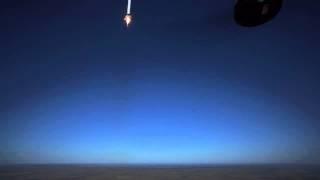
SpaceX Grasshopper Makes Highest Hop Yet - Hexacopter Video
Added 683 Views / 0 LikesThe 10-story Vertical Takeoff Vertical Landing (VTVL) vehicle rose to an altitude of 744m (2440 feet) on October 7th, 2013. A single camera hexacopter got closer than any previous flight, delivering the stunning view.
-
05:15
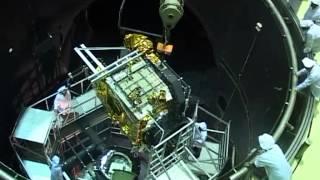
India's First Mars Mission Prepares for Launch | Video
Added 697 Views / 0 LikesEngineers with the Indian Space research Organisation prepare the country's first Mars probe, the Mars Orbiter Mission, for its fall 2013 launch toward the Red Planet.
-
02:21
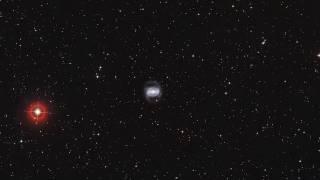
Astronomers Peer Into Supermassive Black Hole Jets | Video
Added 975 Views / 0 LikesUsing the Atacama Large Millimeter/submilimeter Array in Chile, astronomers probed the supermassive black holes that are at the center of most galaxies, principally to analyze the molecular gas their massive gravity wells propel into powerful jets.
-
03:44
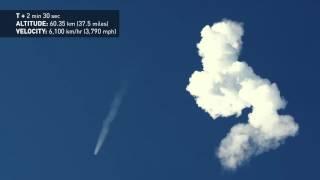
Video Captures SpaceX's 'Re-Lightable' Engine
Added 733 Views / 0 LikesRocketCam's video of the September 29th, 2013 launch, saw the upgraded rocket's first stage separation and an engine restart - key to making fully re-usable boosters that can fly often.
-
08:50

James Woods' 'Futurescape' Promises Sci-Tech Prophecy | Video Interview
Added 759 Views / 0 LikesHow soon will people and machines become one? What are the ethical implications of living for hundreds or thousands of years? James Woods visits with LiveScience reporters @DavidSkyBrody and @JillScharr to explain his new Science Channel series.
-
01:13

Aurora's Flow Over Sweden's Lake Torneträsk | Time-Lapse Video
Added 876 Views / 0 LikesChad Blakley (lightsoverlapland.com) captured footage of the aurora borealis on Oct 17th, 2013. The lake is the sixth largest body of water in Sweden and is located in Abisko National Park.
-
01:21

Star Murdered, Suspect Medium-Sized Black Hole | Video
Added 775 Views / 0 LikesJust a few hundred thousand times our Sun's mass, the hungry singularity in dwarf galaxy 47 Abell 1795 munched on a nearby star for at least 6 years, while the Chandra X-ray Observatory watched.
-
03:57

Pluto 'Up-Close' Coming Soon: Spacecraft's Historic Encounter | Video
Added 823 Views / 0 LikesNASA's New Horizon spacecraft left Earth in 2006 and is quickly approaching its fly-by of the icy dwarf plant and its moons. Its closest approach will occur on July 14th, 2015.
-
02:02
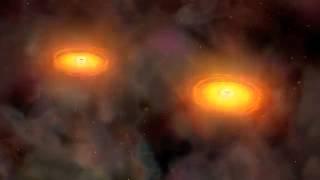
2 Supermassive Black Holes To Merge When Galaxies Collide | Video
Added 805 Views / 0 LikesTwo Milky Way-sized spiral galaxies (the NGC 6240 system) will eventually become one elliptical galaxy with a mass of 10 billion Suns harboring one mega-singularity. The merger may touch off huge gravity waves. Read more about the merger here: http://goo.
-
01:41
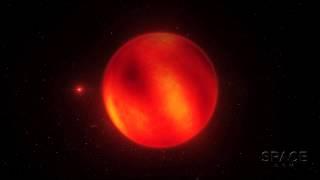
Nearest Brown Dwarf Star Shows Moody Atmosphere
Added 802 Views / 0 LikesEuropean Southern Observatory astronomers have mapped the mood of the closest brown dwarf star to the Sun. By comparing atmospheres of stars, scientists may learn to predicting solar weather and our Sun's long term climate variations. -- Read More Here: h
-
02:26
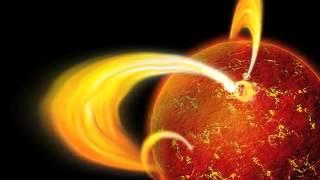
Misfit Magnetar Conceals Its 'Allure' Beneath The Surface | Video
Added 840 Views / 0 LikesA highly magnetic neutron star (Magnetar SGR 0418) has a much weaker magnetic field at its surface than others of its kind, but can still muster high-energy flares. Researchers believe a strong magnetic field lies tightly wrapped beneath its surface.
-
01:11

Galactic Collisions Fuel Supermassive Black Holes | Video
Added 841 Views / 0 LikesThe graceful gravitational dance of two colliding galaxies can feed the supermassive black holes at their center, rearranging and heating up the gas within these galaxies as seen in this simulation.
-
02:39
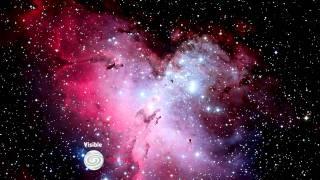
Inside the Pillars of Creation - Space Telescopes Peer Into Nebula
Added 803 Views / 0 LikesSpace observatories have returned far-infrared (Herschel) and multi-energy x-ray (XMM-Newton) imagery of the Eagle Nebula, birthplace of new star systems, giving astronomers new understanding of processes sculpting the iconic "pillars".
-
03:49
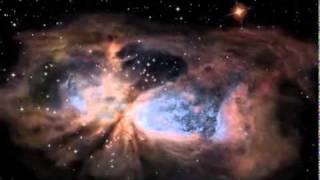
Stellar Angel: Young Star's Massive Gas Cloud Spreads Its Wings
Added 783 Views / 0 LikesNow in its final stages of formation, a star named S106 IR is disrupting and illuminating nearby gas and dust clouds in a shape resembling a snow angel. The Hubble Space Telescopes Wide Field Camera 3 captured the image.
-
00:57
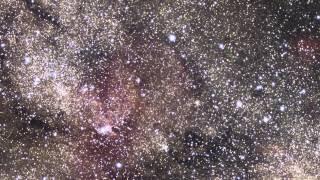
Dark Cloud Is Creating A Monster Star | Video
Added 772 Views / 0 LikesDark Cloud SDC 335.579-0.292 was observered by the Atacama Large Millimeter/submillimeter array (ALMA) in Chile. It is 500 times the mass of the Sun and the largest ever seen in the Milky Way.
-
01:22
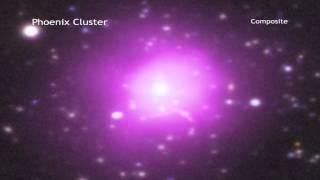
Star 'Resurrecting' Phoenix Cluster Astounds Astronomers | Video
Added 885 Views / 0 LikesLocated in the constellation of same name, the Phoenix Cluster has come back to life, bursting with new star formation. NASA's Chandra X-ray Observatory, the NSF's South Pole Telescope and others studied this huge celestial object.
-
03:22
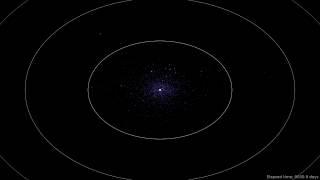
2299 Alien Planets Orbiting One Sun? | Video
Added 762 Views / 0 LikesThat's what the Harvard mind of Alex Parker devised when he put together an animation of most of the Kepler Space Telescope's planet candidates orbiting one star. Distance from each planets actual host star and relative speed is preserved.
-
08:42
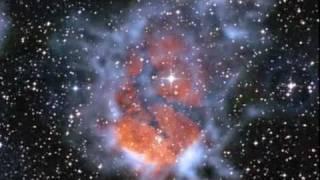
Most Complex Observatory Releases First Image
Added 793 Views / 0 LikesHumankind's most intricate radio-telescope, ALMA (Atacama Large Millimeter/submillimeter Array) captured this image of the colliding Antenna galaxies. Only 22 of ALMA's 66 planned antennas are built; the array will span 16 kilometers of the Chilean high
-
00:42
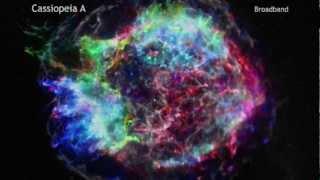
Star's Guts Flipped Inside-Out In Supernova Explosion | Video
Added 786 Views / 0 LikesX-ray observations of supernova Cassiopeia A by the orbiting Chandra X-ray Observatory show that some of the innermost elements are now located near the outer edges of the remnant; proof of the explosion's power
-
04:28

Hubble Telescope's Hidden Treasures Revealed | Video
Added 832 Views / 0 LikesAstronomer Joe Liske (aka Dr J) presents the winners of the Hidden Treasures image processing competition, a 2012 contest that challenged the public to find spectacular Hubble Space Telescope images that were never released. See the results here.
